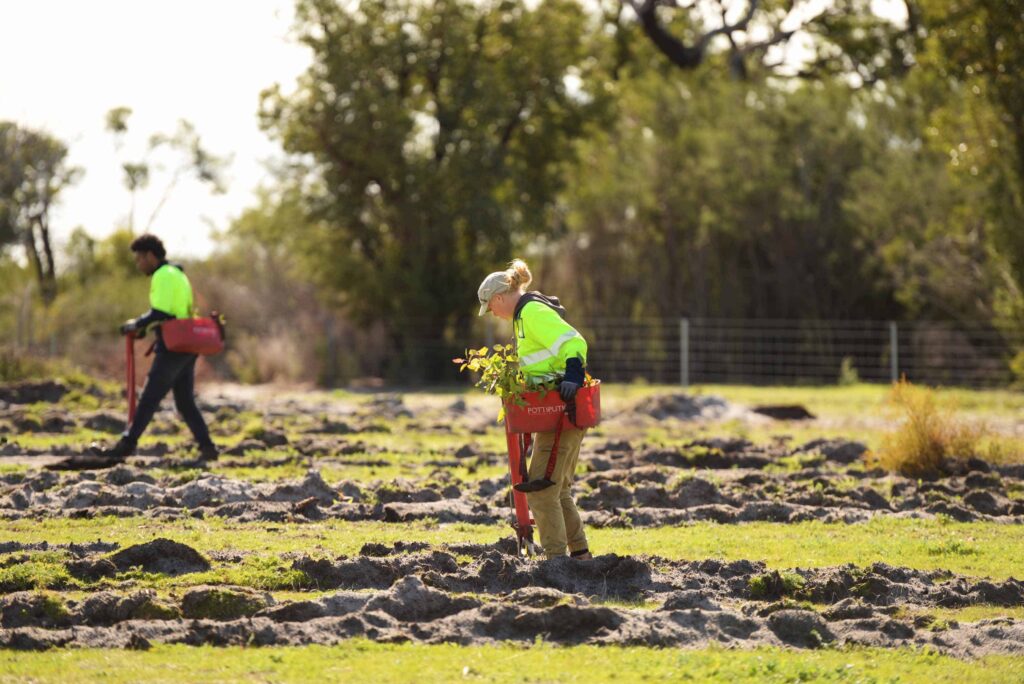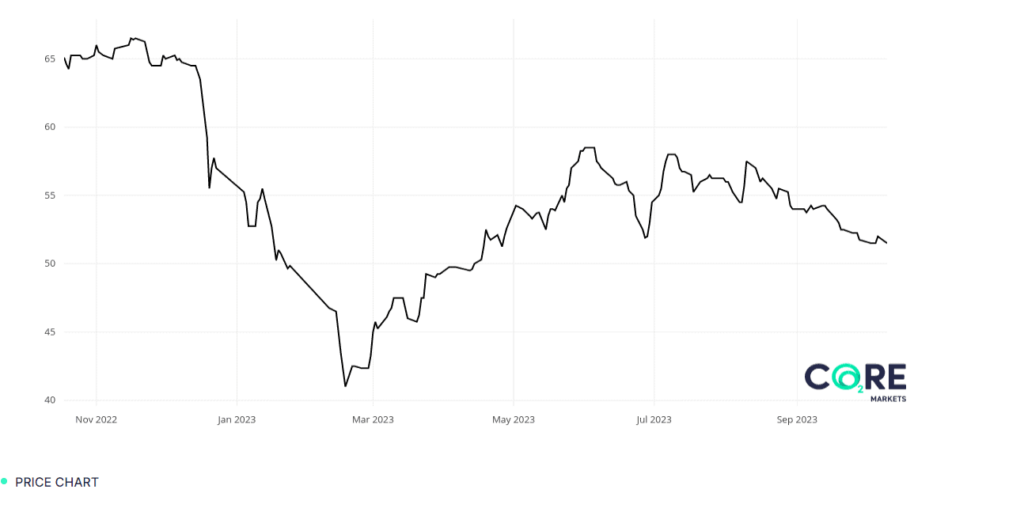Carbon credit projects are initiatives that reduce or remove greenhouse gas emissions. Carbon credits may be purchased to demonstrate investment in climate change mitigation or to offset an organisation’s emissions. While decarbonisation is the most important goal for climate change mitigation, carbon credits have an important role to play in the just and equitable transition to a net zero future, with carbon credit co-benefits offering an avenue for benefits beyond emissions mitigation and sequestration.
The past year has generated rich discussion on the integrity of carbon credit projects. Some companies have suffered reputational damage and accusations of greenwashing due to a lack of transparency regarding emissions reduction, revenue-sharing and biodiversity outcomes.
Part of this debate stems from increasing public expectations that carbon projects will not only avoid or sequester greenhouse gas emissions but will also contribute to long-standing sustainable development goals. For this reason, the co-benefits of carbon projects are emerging as a key focus for carbon credit buyers and therefore carbon project developers.
What are carbon credit co-benefits?
Co-benefits are the positive impacts to ecosystems, society and the economy that may result from carbon projects in addition to emissions reduction. In Australia, land-based carbon projects are registered with the Australian Carbon Credit Unit (ACCU) Scheme (formerly known as the Emissions Reduction Fund) and require activities such as:
- Reforestation by Mallee or Environmental Plantings Method: Direct planting or seeding of vegetation to sequester carbon,
- Human-Induced Regeneration Method: Reducing or better managed grazing pressure to enable regeneration of native vegetation,
- Tidal Restoration of Blue Carbon Ecosystems Method: Remove physical barriers to enable regeneration of tidal wetlands along the coast,
- Soil Organic Carbon Method: Changing farming practices to encourage soil carbon sequestration, and
- Savanna Fire Management Method: Conducting prescribed burning in the early dry season to encourage a net reduction in emissions associated with uncontrolled wildfire later in the season.
These activities may drive a broader uplift in the condition of ecosystems and habitats for native animals, the health benefits and economic efficiencies of cleaner air and water. They may also create opportunities for cultural or employment activities in rural areas, and help to diversify a community’s income sources.
In these ways, investment in carbon projects that enhance co-benefits can contribute not only to climate change mitigation but also to broader sustainability goals, promoting holistic and long-term ecological and societal well-being. The criticality of these benefits has led to organisations such as the Aboriginal Carbon Foundation and the World Business Council for Sustainable Development to term them as ‘core benefits’ that should result in expected outcomes, rather than potential upsides, of carbon project activities.

Tree planting project, W.A.
What are examples of carbon credit co-benefits?
Some types of carbon projects are associated with greater co-benefits than others. For example, a mallee planting project may maximise carbon sequestration but offer little biodiversity since only a single species is planted. In contrast, a human-induced regeneration project can enable large-scale benefits to threatened species habitat, salinity reduction, and soil stabilisation by reducing the impact of both grazing livestock and pests, so that thousands of hectares of biodiverse native bush can re-establish and mature.
Savanna fire management carbon projects offer significant cultural benefits both by supporting Traditional Owners to get back on Country to conduct their traditional fire practices and by offering an income stream for remote communities. The project’s strategic prescribed reduction burnings also benefit biodiversity by reducing the incidence of late dry season wildfires that can devastate the landscape.
Other examples of carbon credit co-benefits from Australian carbon projects include:
- Return of threatened fauna and improved biodiversity associated with the return of native vegetation habitat;
- Enhance eco-tourism, environmental stewardship and nature education opportunities as added community and income-generation options alongside restoration-focused activities;
- Downstream water quality benefits from the planting of native forests and diversified pasture;
- Diversification of income and more drought-resilient pasture for farmers conducting carbon soil sequestration;
- Improved coastal resilience to cyclones and storm tide flooding associated with mangroves and coastal vegetation restoration; and
- Enhanced community economies and local natural resource management employment opportunities for ongoing management of environmental planting.
Internationally, other types of carbon credit co-benefits are relevant such as:
- Enhanced indoor air quality is associated with improved, reduced-emission cookstove programs.
- Expansion of energy access associated with waste-to-energy projects that reduce landfill emissions and produce electricity.
- Wildlife protection associated with landscapes is legally secured to ensure the carbon sequestered by reforestation activities is not disturbed.
What are the benefits of focusing a carbon project around co-benefits?
Land-based carbon projects can invite investment back into healthy landscapes and communities so they can become more resilient to climate change, as well as help mitigate climate change. By enhancing co-benefits, carbon projects can invest in an inclusive and equitable transition towards a low-carbon future.
As the carbon market increases in size, there is increased scrutiny of equity – who is benefitting from this investment – and the integrity of claimed carbon abatement. Carbon projects are increasingly being asked for evidence that they benefit nature, local communities and landholders and are creating real and ongoing reductions in greenhouse gas emissions and/or permanence sequestration/removal of carbon. Best practice guidance such as the Oxford Principles for Net Zero Aligned Carbon Offsetting, is being updated accordingly.
Our clients are increasingly focusing their attention on how to build co-benefit enhancement and monitoring into carbon project design. This helps to safeguard the integrity and efficiency of investments in the landscape and provides advantages to carbon project developers, such as:
- The ACCU price premium currently associated with carbon credits perceived to have greater co-benefits, such as Environmental Planting projects and Savanna Burning projects (see image below).
- Diversification of project value, which can boost interest from a larger set of potential partners and open up additional investment sources.
- Generation of good news stories to proactively counter accusations of greenwashing in the carbon market. Learn more in our article Greenwashing, Net Zero and Carbon Credits: Navigating the Climate Integrity Landscape – Ndevr Environmental Consulting.
- Opportunities to build local support and engagement which can smooth landholder relations, ease required planning approvals and create efficiencies in project maintenance.

Credit: Core Markets Many markets in one: Valuing risk, opportunity and co-benefits in the ACCU market | CORE Markets
Why we need to ensure co-benefits are integrated into any carbon credit project
Carbon projects are situated within a rapidly-evolving sustainability ecosystem of emissions reduction targets, global nature positive commitments, natural capital accounting and new climate-risk reporting requirements under the ISSB Standards.
At the national level, Australia’s priorities include the long-standing goal of Closing the Gap on the inequity currently faced by Aboriginal and Torres Strait Islander people; and more recent goals like a 43 per cent emissions reduction by 2030, 30×30 (to protect 30 percent of the nation’s lands and waters by 2030) and zero new extinctions.
Regarding corporate sustainability, expectations are also rising for business to addressing biodiversity loss and other nature-related threats which will evolve as the new Taskforce on Nature-related Financial Disclosures comes into effect. Businesses are also facing increasing pressure on claims of greenwashing. If the purchase of carbon credits is required to support a robust emissions reduction plan, the sourcing of credits from projects that can demonstrate integrity and co-benefits can help mitigate this risk and also help organisations meet other non-carbon nature-related and ESG targets or goals.
It is crucial that investment is scaled and implemented efficiently across these multiple fronts. Well-designed carbon projects that enhance opportunities for environmental and social value can be investments that cross-cut national, community and business priorities.
Ultimately, carbon credit co-benefits are vital for holistic sustainability. Resulting projects can enhance environmental and social impacts, align with global sustainability frameworks, foster community engagement, provide opportunities for First Nationals people as project proponents or partners, and address the twin crises of climate change and biodiversity loss to ensure a more comprehensive approach to carbon mitigation and sustainable development.
What to look for when buying carbon offsets for co-benefits
Carbon credit co-benefits have largely been valued on an informal, unquantified basis. For insight into potential co-benefits, buyers and/or potential investors should ask the following important questions of a project generating carbon credits both international and national:
- Where is the project located? What legislative mechanisms have been established for legal right and transfer of credits? and how strong is the governance of that country?
- Who is the project proponent, and what steps have been taken to ensure sufficient and compliant stakeholder consultation and engagement and/or eligible interest holder consent?
- What share of carbon credit value will the landholder receive?
- How did design and implementation of project activities seek to enhance non-carbon outcomes?
- What monitoring or evidence or these project co-benefits can be provided?
In line with growing integrity standards, there are increasing calls for monitoring, reporting and verification of carbon project co-benefits including within the recent Review of Australian Carbon Credit Units.
In Australia, carbon credit co-benefits may be currently claimed or verified with a select number of established programs, including: the Queensland Landscape Restoration Fund, Accounting for Nature and the Core Benefits Verification Framework. Co-benefit verification systems are in development both nationally and internationally, with new programs expected in the near future. This includes the Australian government’s proposed Nature Repair Market.
Internationally, the most established programs are the Climate, Community & Biodiversity (CCB) Standard, Gold Standard for the Global Goals and the Sustainable Development Verified Impact Standard Program (SD VISta). These typically result in labels or certificates that are coupled or ‘stacked’ onto carbon credits registered on international carbon credit frameworks, such as Verra and the Gold Standard’s Impact Registry.
When buying carbon credits you should:
- Choose to purchase credits for carbon project types that are associated with greater co-benefits,
- Look for carbon credits that advertise labels or certifications under co-benefit programs,
- Search the registries of these programs for carbon projects that have monitored co-benefits, and
- Conduct investor due diligence that focuses on evidence of project co-benefits when pursuing carbon credit offtake or purchase agreements.
Buyer due diligence should be based on global benchmarks for high-integrity carbon credits like The Core Carbon Principles – ICVCM that require carbon credits to deliver outcomes aligned with the UN SDGs and set rigorous thresholds on disclosure. Buyers may draw on such benchmarks to develop their own minimum criteria or co-benefit performance indicators to guide the selection of carbon credits.
Experts can be engaged to support this process and conduct detailed due diligence. Ndevr Environmental has conducted many such assessments in tight timeframes.
Why your offset strategy should focus on carbon credit co-benefits
Carbon projects can provide efficient, at-scale investment opportunities that benefit national and global sustainability goals by uplifting natural, social and cultural value alongside emissions reduction. These carbon credit co-benefits, or core benefits are increasingly must-haves for carbon credit buyers.
This trend follows from the increased expectations for emissions reduction to be evidence of high integrity and more broadly drive an equitable and inclusive sustainability transition. For project developers, this means centring co-benefits in carbon project design to tap into diversified investment opportunities and build greater community acceptance. For carbon credit buyers, this means assessing co-benefits as part of your due diligence as they may enable carbon projects to provide cross-cutting value to your ESG commitments. Prioritising co-benefits is not just responsible; it’s imperative for a sustainable future.
Need advice on carbon credits and co-benefits or your corporate net zero strategy?
For more detailed and technical guidance and advice on carbon markets, carbon credits and carbon credit co-benefits, avoiding greenwashing, or building a robust emissions reduction, or net-zero strategy, please get in touch, our experts would love to help.
We’re technical experts and trusted advisors to some of Australia and the worlds most well-known companies and we’re here to help contact us to learn more or call +61 3 7035 1740.

